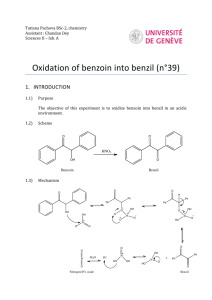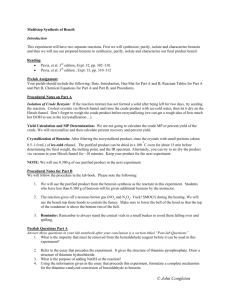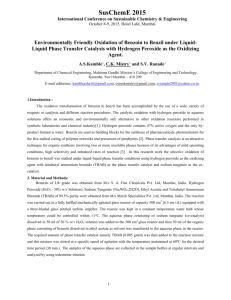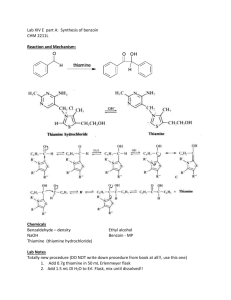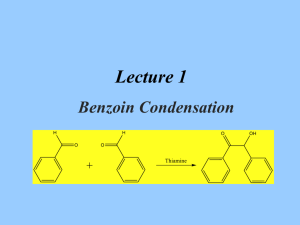9
advertisement
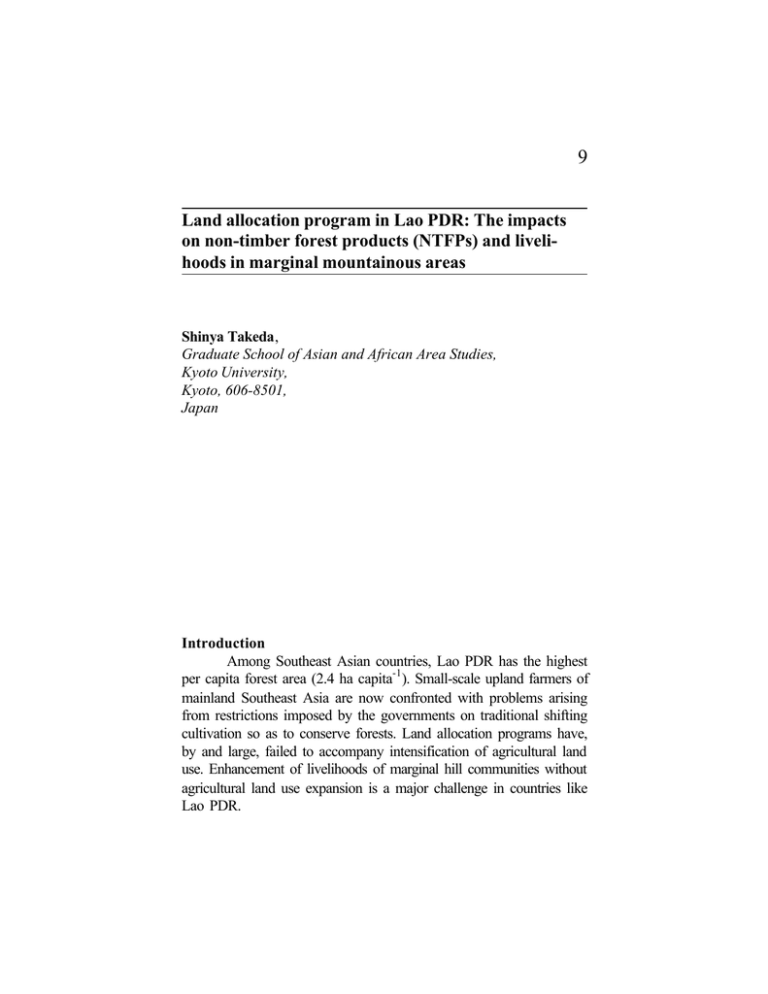
Shinya 105 9 Land allocation program in Lao PDR: The impacts on non-timber forest products (NTFPs) and livelihoods in marginal mountainous areas Shinya Takeda, Graduate School of Asian and African Area Studies, Kyoto University, Kyoto, 606-8501, Japan Introduction Among Southeast Asian countries, Lao PDR has the highest per capita forest area (2.4 ha capita-1). Small-scale upland farmers of mainland Southeast Asia are now confronted with problems arising from restrictions imposed by the governments on traditional shifting cultivation so as to conserve forests. Land allocation programs have, by and large, failed to accompany intensification of agricultural land use. Enhancement of livelihoods of marginal hill communities without agricultural land use expansion is a major challenge in countries like Lao PDR. 106 NTFP and livelihoods in Lao PDR Fallow management with Styrax tonkinensis Benzoin is a balsamic resin obtained from the trees of genus Styrax. Siamese benzoin obtained from Styrax tonkinensis and Sumatran benzoin obtained from Styrax benzoin are commercially the most valuable kinds of benzoin. They are used as medicine, cosmetic and as incense. Benzoine is used for protection/disinfection of wounds/skin and to get relief from cough/cold/bronchitis. It is a diuretic, antiseptic for urinary passages and also a carminative. Cultivation of Styrax trees together with hill rice is an age-old practice in northern Sumatra, Laos, and northern Cambodia. Export of benzoin by these countries began centuries ago. Cambodia exported 270 t of benzoin annually during 1630s, while Persia alone imported about 60 t annually (Reid, 1993). In northern Laos, benzoin production from S. tonkinensis is integrated with upland rice grown under shifting cultivation. Forests are clear-felled and the slash is burnt during dry season. Fire stimulates germination of S. tonkinensis . During rainy season, seedlings of S. tonkinensis grow alongwith upland rice crop. After harvesting of rice crop, S. tonkinensis dominates the fallow phase. Forest land allocation policy implemented by the government of Laos in 1996 is such that shifting cultivation cycles longer than 4 years are not feasible in land allocated to an average household. As benzoin is available after 7 years of tree growth, 4 year long or shorter cultivation cycles exclude production of benzoin in fallow lands. Thus, S. tonkinensis based traditional agroforestry is constrained by the rigid land allocation policy together with market related problems (Box 1). Non-timber forest products (NTFP) and local livelihoods A survey of 14 mountain villages in Vientiance province revealed that more than 35 NTFPs were marketed. Medicinal plants viz., Berberine Vine (Coscinium fenestratum) and Yahoa (Smilax glabra) are largely exported to China. Unsustainable extraction of such species is a major threat to wild biodiversity. In India and Sri Lanka, Coscinium fenestratum has already been listed as an endangered species (Agusta, 2003). Cardamom grows abundantly in disturbed forests and forest fallows. Thus, moderate disturbance may favor growth of Shinya 107 Box 1. Uses and management of Styrax tonkinensis in shifting agriculture fallows: highlights of a case study conducted in K village, Nam Bak District, Louang Prabang Province, Laos. • Upland rice is the major crop grown after slash-burn. Vegetation is slashed in the month of February, allowed to dry during February-March and burnt in April. Upland rice is sown in June. Besides upland rice, cassava, sesame, maize, Celosia argentea (used during rituals) and chilli pepper (Capsicum frutescens) are also grown, more so, in the vicinity of dwellings. S. tonkinensis showed a density of 5250 seedlings ha -1 when rice crop was 2 months old and weeding operation was over. • In a 3 year old fallow field, there were 2900 individuals of S. tonkinensis with an average height of 5 m. The understorey in this forest fallow comprised Eupatorium odoratum as the most dominant constituent with an average height of 2.2 m. • In a 5 year fallow, density of standing trees of S. tonkinensis was estimated as 1175 ha -1 and average height as 11 m. There were 250 stumps ha -1. Discussion with local people revealed that tree cutting had to be undertaken for building houses destroyed by fire in the recent past. They protect trees of S. tonkinensis and start extraction of benzoin from them in 6 year or older fallow fields. • An 8 year old fallow field is almost a pure stand of S. tonkinensis with a density of 875 trees ha -1 and basal area of 17 m2 ha-1. • S. tonkinensis is a fast growing and light demanding pioneer species. • Benzoin is harvested in March - April. Average yield of benzoin is about 0.5 kg tree-1. Middlemen buy benzoin in the village and sell it to big traders in Louang Prabang. • Though more than 60% households own some fallow vegetation with S. tonkinensis, only 6 households were actively engaged in harvesting benzoin. The majority hesitated to harvest benzoin as its price was low. Yet, it was an important source of cash income, particularly for the poor. 108 NTFP and livelihoods in Lao PDR economically valuable species which happen to be light-demanding. As per government land allocation program, land is classified as: (a) individual agricultural land, and (b) community or government forest land. NTFPs are collected from community or government forests which include abandoned swiddens and natural forests. Po Sa (Broussonetia papyrifera), Mak Lin Mai (Oroxylum indicum), Mak Phai (Baccaurea ramiflora), Pak Ka Dao (Azadirachta indica), Pak Sa Mek (Syzygium gratum) and Pak Tiou Som (Cratoxylon formosum) are some of the NTFPs available from abandoned swiddens, Hem Khouay (Coscinium fenestratum), Kem (Thysanolaena maxima) and Mak Khene (Zanthoxylum limonella) from abandoned swiddens as well as natural forests and, Mak Tao (Arenga westerhoutii), Ket Sa Na (Aquilaria crassna), Khi si (Shorea siamensis), Si Siet (Pentace burmanica) Pak Koud (Diplazium esculentum) and Bun (Calamus spp.) only from natural forests. Though government has introduced many reforestation programs, people have only a little appreciation for them due to long gestation periods. Rather, fallows in this area are commonly covered with naturally regenerated Peltophorum dasyrachis, a tree species of Leguminosae, which can improve soil fertility as well as providing timber. Conclusions Secondary forest or fallow lands provide a variety of NTFPs. These NTFP species, by and large, are light-loving pioneer species. Their regeneration and growth are favoured by disturbances such as shifting cultivation and forest fire. Absolute exclusion of human disturbances such as shifting cultivation may lead to depletion of NTFPs which fail to survive as understorey under heavy shade regime. This will lead to severe consequences affecting local livelihoods. This issues need to be addressed in forest land allocation and forest zoning programs. References Agusta, Andria. 2003. Coscinium fenestratum (Gaertner) Colebr. In R.H.M.J. Jemmens and N. Bunyapraphatsara (eds.) Plant Resources of South-East Asia 12(3): Medicinal and Poisonous Plants 3. pp.139-140. PROSEA, Bogor Shinya 109 DeBeer, J.H. 1993. Non-wood Forest Products in Indochina, Focus: Viet Nam. FAO Working Paper FO: Misc/93/5. Rome, FAO. Denovan, D. 2003. Trading in the Forest: Lessons from Lao History. In: The Political Ecology of Tropical Forests in Southeast Asia, Kyoto University Press, Kyoto. Lejosne, Jean-Claude. 1993. Le Journal de Voyage de Geritt van Wuysthoff et ses assistants au Laos (1641-42), 2nd rev. ed., Metz. Pinyopusarerk, K. 1994. Styrax tonkinensis: Taxonomy, Ecology, Silviculture and Uses. Australian Centre for International Agricultural Research Technical Report 31, Canberra. Reid, Anthony. 1993. Southeast Asia in the Age of Commerce 14501680, Volume Two: Expansion and Crisis. New Haven, Yale University Press. Stuart-Fox, Martin. 1998. The Lao Kingdom of Lan Xang: Rise and Decline. Bangkok, White Lotus. Takeda, Shinya. 2004. Management of Non-timber Forest Products in Laos: Fallow Forest Growing Styrax tonkinensis for Benzoin Production. In H. Furukawa, M. Nishibuchi, Y. Kono and Y. Kaida (eds.) Ecological Destruction, Health, and Development. pp.521-530. Kyoto University Press, Kyoto Watanabe, H., Abe, K., Kawai, K. and Siburian, P. 1996. Sustained use of highland forest stands for benzoin production from Styrax in north Sumatra, Indonesia. Wallaceana 78, 15-19.
